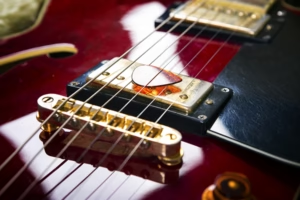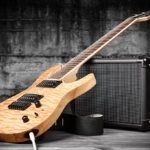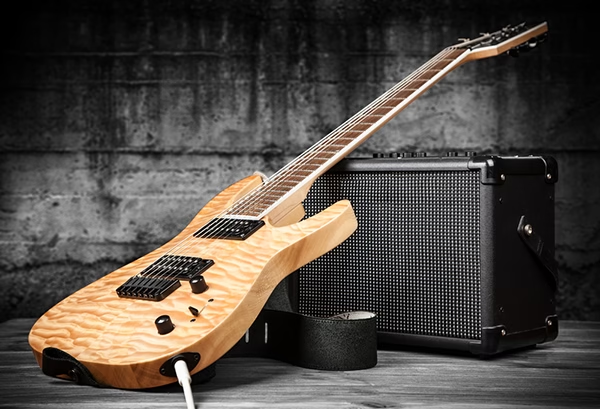Electric Guitars Guide: 7 Powerful Secrets Beginners Love
1. The Ultimate Electric Guitars Guide for Starters
If you’re stepping into the world of amplified strings, this Electric Guitars Guide is your ultimate roadmap. Whether you’re drawn to rock solos, blues bends, or smooth jazz tones, understanding the fundamentals will set you apart. Electric guitars aren’t just instruments — they’re gateways to creativity, confidence, and expression.
At its core, an electric guitar converts string vibration into sound through magnetic pickups. Unlike acoustic guitars, they rely on an amplifier to project tone, which means you can shape your sound endlessly with effects and settings. For beginners, this flexibility is both exciting and overwhelming — and that’s exactly why this Electric Guitars Guide exists: to simplify the journey and give you clear, actionable steps.
2. Choosing the Right Guitar: The 3 Must-Have Factors
Selecting your first guitar is a thrilling milestone. However, many beginners fall into the trap of buying based on looks alone. According to Fender’s Beginner Music Report, over 90% of new players say that instrument comfort is more important than appearance. Here are the top three factors this Electric Guitars Guide emphasizes:
-
Body Style – Stratocaster, Telecaster, and Les Paul shapes each feel different. Strats are ergonomic and light, great for long practice sessions. Les Pauls deliver thicker, warmer tones ideal for rock and blues.
-
Pickup Type – Single-coils (found on most Fenders) give bright, crisp tones; humbuckers (common on Gibsons) offer fatter, heavier sounds. For versatility, some guitars feature both.
-
Budget & Playability – Beginners should aim for $200–$600 models from trusted brands like Yamaha, Epiphone, or Squier. Look for smooth fret edges, comfortable necks, and decent tuners.
Remember: this Electric Guitars Guide prioritizes comfort and quality over flash — because a playable instrument keeps you inspired.
3. Understanding Amps and Tone Controls
Your guitar is only half the equation; the amplifier defines how it truly sounds. Think of your amp as your voice box — it projects personality. As this Electric Guitars Guide explains, amps come in three main types:
-
Solid-State Amps – Affordable and reliable, ideal for home practice.
-
Tube Amps – Produce warm, dynamic tones favored by professionals, though heavier and pricier.
-
Modeling Amps – Digital powerhouses offering dozens of simulated amp sounds, perfect for experimenting.
For beginners, the Boss Katana or Fender Mustang LT25 are highly rated for tone flexibility. Start with clean settings, then experiment with gain, bass, mid, and treble to find your sound.
Pro tip from this Electric Guitars Guide: keep your volume and tone knobs around halfway when starting. Adjust small changes and listen closely — your ears will become your best teachers.
4. Essential Accessories: 5 Tools That Make Learning Easier
Learning guitar is smoother when you have the right tools. Here are five accessories this Electric Guitars Guide insists every beginner should own:
-
Tuner – Staying in tune prevents frustration. Clip-on tuners like Snark or D’Addario are reliable and cheap.
-
Guitar Picks – Experiment with thicknesses. Thin picks are forgiving; medium picks give more control.
-
Strap – Adjust it so the guitar rests comfortably near your waist. A padded strap prevents shoulder fatigue.
-
Cable – Buy a quality cable (like Mogami or Ernie Ball) to reduce unwanted noise.
-
Stand & Case – Keeping your guitar accessible encourages practice — and protects it when not in use.
These basics cost little but dramatically improve consistency and comfort, two cornerstones of this Electric Guitars Guide.
5. Learning to Play: Start with Rhythm Before Leads
Too many beginners jump straight into solos and fail to develop timing. This Electric Guitars Guide recommends starting with chords and rhythm patterns. Master open chords (E, A, D, C, G) first — they form the backbone of countless songs.
Use a metronome or backing track to develop timing. Aim for clean strumming, then practice power chords, which are essential for rock and punk styles. Once your rhythm is solid, move to lead exercises like simple pentatonic scales.
Sites like JustinGuitar and Fender Play offer structured beginner lessons. Consistency is key: 20 minutes a day beats two hours once a week.
6. Tone Secrets: How to Sound Like the Pros
Your dream tone is achievable faster than you think. This Electric Guitars Guide breaks tone crafting into three layers:
-
Your Hands – How hard or soft you pick changes everything. Practice both subtle and aggressive styles.
-
Your Guitar – Adjust pickup selectors. Bridge pickup = bright and sharp. Neck pickup = warm and mellow.
-
Your Amp/Effects – Start with EQ flat (bass/mid/treble at 5). Add effects gradually: a touch of reverb, a hint of overdrive, and you’re golden.
A great exercise from this Electric Guitars Guide is the “5-minute tone swap.” Every day, tweak one knob or effect and note how it changes your sound. Soon, you’ll know exactly how to dial in blues warmth or metal crunch without guessing.
7. Maintenance: Keep Your Guitar in Top Shape
A clean, well-maintained guitar plays better and lasts longer. Here’s what this Electric Guitars Guide teaches every beginner:
-
Wipe your strings after each session — sweat causes corrosion.
-
Change strings every 2–3 months (or sooner if dull).
-
Check intonation monthly — if notes sound sharp up the neck, a simple bridge adjustment fixes it.
-
Keep it humidified — dry rooms can crack wooden necks.
-
Store properly — always in a case or on a stand, away from heat sources.
Maintenance might sound dull, but as any seasoned guitarist will confirm, it’s what keeps your instrument playable for years.
8. Inspiration: Why Beginners Quit — and How to Stay Motivated
Around 90% of new guitarists quit within their first year, according to Yamaha Music Research. But this Electric Guitars Guide exists to make sure you’re part of the 10% who stay.
Set micro-goals: learn one riff this week, one song next. Record yourself monthly to hear progress. Join online communities like Reddit’s r/Guitar or local jam groups. Sharing your journey turns frustration into fuel.
And remember: even legends like Jimi Hendrix started with buzzes, wrong notes, and sore fingers. Every pro was once where you are now.
9. Upgrading Your Setup: When and What to Buy Next
Once you’ve practiced for six months or more, your skills (and ears) mature. This Electric Guitars Guide suggests upgrading gear strategically:
-
New Guitar – Move up to mid-tier models like a Fender Player Series or PRS SE when your current guitar limits tone variety.
-
Pedals – Start with three: tuner, overdrive, delay.
-
Recording Interface – If you want to record, try a Focusrite Scarlett Solo and free software like Audacity or Reaper.
Upgrading isn’t about showing off — it’s about evolving your creative expression.
10. The Emotional Power of Electric Guitars
Beyond sound and specs, electric guitars embody emotion. They can energize crowds, soothe sadness, and express rebellion or romance. This Electric Guitars Guide ends where every player begins — passion.
Music isn’t about perfection; it’s about connection. Whether you dream of headlining a stage or jamming in your bedroom, your guitar is a lifelong companion. Keep learning, stay curious, and never stop creating.







